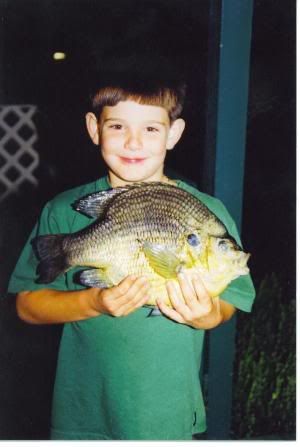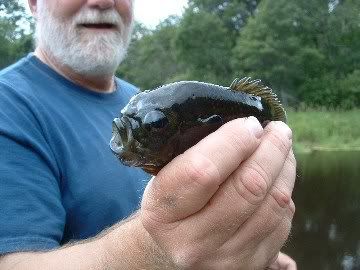Triploid LMB? - 01/22/08 03:05 PM
Almost everyone wants LMB as the normal accepted stocking practice for stock ponds, but many have concerns of overpopulation issues and amount of time commitment for management control.
Is there a scientific explanation as to why existing technology with triploid grass carp cannot be archived with LMB, or strictly a business risk decision?
http://www.wvu.edu/~agexten/aquaculture/triploid.htm#Development
“……….. most fishes, are diploid. They possess two sets of chromosomes (one from each parent) and are capable of sexual reproduction. Triploid fish, however, have three sets of chromosomes and are incapable of normal sexual reproduction and the production of viable offspring. …….
Triploid fish were first produced in the United States in 1979 as inter-specific crosses between female grass carp and male bighead carp Aristichthys nobilis (Molone 1982). These fish contained an extra set of chromosomes and were incapable of reproduction, but were hybrids of the two species and not true grass carp; successful plant control was limited. Later, triploid grass carp were produced in-transpecifically, by physically shocking fertilized eggs with heat, cold, or hydrostatic pressure; this stimulated the retention of a set of chromosomes that would normally be expelled during cell division (Clugston and Shireman 1987, Cassani and Caton 1986, and Allen and Wattendorf 1967).
Physical shock techniques induce polyploidy with apparent yields of 100 percent triploids (Cassani and Caton 1980). Because of this high success rate, this technique is being used to produce large numbers of fish. Concern exists, however, that induced polyploidy could result in the production of some reproductive grass carp (i.e., diploid or reproductive triploid fish). Consequently, triploidy in each must be verified prior to stocking. Ploidy is most often determined by a Coulter Counter, which electronically measures the volume of a red blood cell after the cell membrane has been chemically removed (Allen and Wattendorf 1987, Clugston and Shireman 1987). Since triploids have larger red blood cells (and nuclei) than diploids, cell size differences are used to confirm triploidy (Allen and Wattendorf 1987)."
Is there a scientific explanation as to why existing technology with triploid grass carp cannot be archived with LMB, or strictly a business risk decision?
http://www.wvu.edu/~agexten/aquaculture/triploid.htm#Development
“……….. most fishes, are diploid. They possess two sets of chromosomes (one from each parent) and are capable of sexual reproduction. Triploid fish, however, have three sets of chromosomes and are incapable of normal sexual reproduction and the production of viable offspring. …….
Triploid fish were first produced in the United States in 1979 as inter-specific crosses between female grass carp and male bighead carp Aristichthys nobilis (Molone 1982). These fish contained an extra set of chromosomes and were incapable of reproduction, but were hybrids of the two species and not true grass carp; successful plant control was limited. Later, triploid grass carp were produced in-transpecifically, by physically shocking fertilized eggs with heat, cold, or hydrostatic pressure; this stimulated the retention of a set of chromosomes that would normally be expelled during cell division (Clugston and Shireman 1987, Cassani and Caton 1986, and Allen and Wattendorf 1967).
Physical shock techniques induce polyploidy with apparent yields of 100 percent triploids (Cassani and Caton 1980). Because of this high success rate, this technique is being used to produce large numbers of fish. Concern exists, however, that induced polyploidy could result in the production of some reproductive grass carp (i.e., diploid or reproductive triploid fish). Consequently, triploidy in each must be verified prior to stocking. Ploidy is most often determined by a Coulter Counter, which electronically measures the volume of a red blood cell after the cell membrane has been chemically removed (Allen and Wattendorf 1987, Clugston and Shireman 1987). Since triploids have larger red blood cells (and nuclei) than diploids, cell size differences are used to confirm triploidy (Allen and Wattendorf 1987)."

